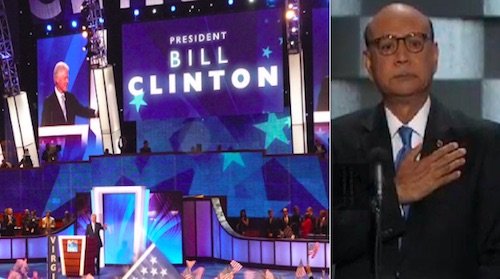TIM, Immigration, David R Fullmer, Attorney At Law
 On January 8, 2010, the United States Citizenship and Immigration Service (USCIS) issued a Guidance Memorandum for Service Center Directors titled “Determining Employer-Employee Relationship for Adjudication of H-1B Petitions, Including Third –Party Site Placements.” The stated purpose of the Memorandum is to provide updated guidance to adjudication officers to clarify what constitutes a valid employer-employee relationship to qualify for the H-1B “specialty occupation’ classification.
On January 8, 2010, the United States Citizenship and Immigration Service (USCIS) issued a Guidance Memorandum for Service Center Directors titled “Determining Employer-Employee Relationship for Adjudication of H-1B Petitions, Including Third –Party Site Placements.” The stated purpose of the Memorandum is to provide updated guidance to adjudication officers to clarify what constitutes a valid employer-employee relationship to qualify for the H-1B “specialty occupation’ classification.
H-1B visas are one of the most commonly used visas by U.S. Employers. The H-1B visa program allows U.S. Employers to employ foreign workers that are coming to the United States temporarily to work in “specialty occupations” that require theoretical or technical expertise in a specialized field and a bachelor’s degree or its equivalent. Typical H-1B occupations include architects, engineers, computer programmers, accountants, attorneys, doctors and college professors. H-1B petitions can only be filed by a “ United States employer.” A U.S. Employer is a person, firm, corporation, contractor or other organization in the United States which (1) engages a person to work within the U.S., (2) has an employer-employee relationship and (3) has an IRS Tax identification number.
While H-1B’s are utilized by many U.S. Employers to engage Employees in traditional employment environments (where the beneficiary works at an office location owned/leased by the petitioner), many U.S Employers petition for H-1B visas for beneficiaries and place them out on either temporary or permanent assignments to third-party work sites. It is this scenario that the USCIS has focused on in issuing this memorandum. USCIS has noted that “the lack of guidance clearly defining what constitutes a valid employer-employee relationship has raised problems, in particular with independent contractors, self-employed beneficiaries and beneficiaries placed at third party worksite”
The USCIS has clearly stated that an employer who seeks to sponsor a temporary worker in an H-1B specialty occupation is required to establish a “valid employer-employee relationship.” In addition to all other regulatory requirements, including that the petitioner provide an LCA specific to each location where the beneficiary will be working, the petitioner must establish the employer-employee relationship. In this guidance memorandum, the USCIS has reiterated the common law labor standard in interpreting the term “employer-employee relationship “to require that the Employer has the right to control the manner and means by which the product is accomplished.”
In discussing the determination of such a relationship, the USCIS has noted that no one factor is decisive, but rather the determination must take in the ”totality of the circumstances” and the adjudicating officer should be mindful of the nature of the petitioner’s business and the type of work of the beneficiary. To prove a valid Employer-Employee relationship the petitioner must be able to establish the right to control the beneficiary’s employment. Other criteria include supervisory responsibility and methodology, assessment tools, and decision-making authority like hiring, firing, and salary and bonus determinations.
It is clear that the burden is on the Employer/Petitioner to show that an employer-employee relationship does and will exist and that the Petitioner is responsible for the overall direction of the beneficiary’s work throughout the entire duration of the H-1B validity period. The Employer must demonstrate a combination of evidence that reflects the “totality of circumstances”. USCIS provides a list in the Memorandum that includes meticulously detailed evidence such as: an complete itinerary of services or engagements; signed employment agreements or offer letters with terms and conditions; valid signed contracts delineating all parties, worksites duties and reporting authorities involved; performance review descriptions and organizational charts demonstrating to whom the Beneficiary reports. These requirements also pertain to an H-1B extension. The Memorandum the USCIS carefully emphasizes that a finding of a failure to have maintained the valid employer-employee relationship during the initial approval period of the H-1B may lead to a denial of the Petition.
In a subsequent Questions and Answers posting on the USCIS website (www.uscis.gov) dated 1/13/2010, the USCIS states that the Memorandum does not change any of the requirements for an H-1B petition, but rather just clarifies the requirements for a valid employer-employee relationship as well as discussing the types of evidence that petitioners may provide to establish that the requisite employer-employee relationship exists. While this may technically be true, in practice we have already noted a significant change in the emphasis on and a heightened scrutiny of the employee-employer relationship in the adjudication of not only H-1B visas but O-1 and L-1 visas as well.
Within the last month, our office has received Requests for Further Evidence (RFE’s) issued to clearly qualified Petitioner’s and Beneficiaries seeking H-1B and O-1 nonimmigrant visa classifications. These RFE’s have focused specifically on the validity of the employer-employee relationship, substantiality of the business, and peeked behind the corporate veil to ascertain and determine corporate ownership. Adjudicating Officers have questioned the validity of an employer-employee relationship where the Beneficiary was involved in the ownership of the petitioning entity. Interestingly enough, a recent prior O-1 Petition with the same Petitioner, Beneficiary, and facts substantiating the company and extraordinary ability of the Beneficiary had been approved. USCIS has acknowledged that a sole stockholder of a corporation can be employed by that corporation as the corporation is a separate legal entity from its owners, however they are requiring that in order to establish that a valid employment relationship exists, evidence must be submitted showing that there is someone else at the company to whom the beneficiary reports. There must be evidence of the requisite “control” of the beneficiary’s services by one other than the beneficiary to gain approval.
Given the increased scrutiny on H-1B and other nonimmigrant work visas like O-1 and L-1 petitions, the one thing that is clear is that the Petitioner must be diligent in gathering the necessary documents and evidence to support the employer-employee relationship. If the first month of 2010 is any indication of a trend, one can expect to see many more RFE’s issued. Attorneys and their clients will be kept very busy overcoming the new burden created by this Memorandum of Clarification from USCIS.
Disclaimer: Nothing on these pages should be taken as legal advise for any individual case or certain situation. The information is general and should not be relied on upon for any specific situation. For legal advice, please contact one of our attorneys at www.usworkvisa.com
All content is copyrighted by IVENER & FULLMER LLP 2008. All rights reserved. No portion of this article may be duplicated without permission. Services relating to immigration and naturalization provided by Ivener & Fullmer LLP are provided by active members of the State Bar of California or by a person under the supervision of active members of the State Bar of California.






